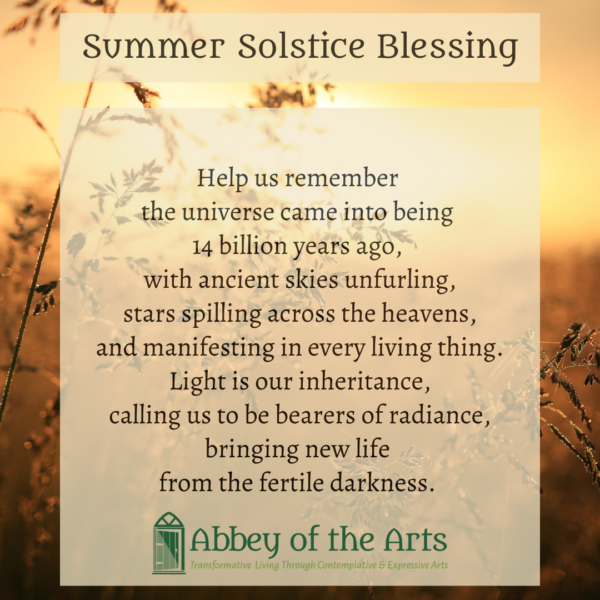We are delighted to welcome Carl McColman on Saturday, May 13th (the feast of Julian!) to lead us in a mini-retreat on her wisdom about divine love.
This is an excerpt from his book, Christian Mystics: 108 Seers, Saints and Sages (published by Broadleaf Books).
Julian of Norwich wrote a beautiful book about her visions, but it reveals very few details about her life; in fact, we have no idea what her real name is. The name by which she is known comes from her association with the Church of Saint Julian in the English town of Norwich, where at some point in her life she became an anchoress—a vowed solitary who lived her days devoted to prayer and meditation, confined to a cell adjoining the church.
Virtually nothing is known about her aside from what she writes in her remarkable book, but even there she reveals little about herself, preferring instead to talk about her “courteous” God. In her work, Julian recounts an amazing series of visions she had while suffering from a life-threatening illness; as she reflects on the meaning of her visions, she reveals a profound level of mystical wisdom and insight that, over six hundred years later, remains on the cutting edge of Christian theology.
Julian wrote very little—just a short treatise recounting a series of visions she had during a dramatic twenty-four-hour period in May 1373, which she probably wrote shortly after the fact, only to expand into a full-length book some twenty years later. This makes Julian the first woman to have written a book in the English language, and that fact alone gets her included in college literature anthologies.
When Julian was “thirty and one-half years old,” she became sick enough that a priest was summoned to issue her last rites. While on her apparent deathbed, he held a crucifix before her face and instructed her to gaze upon Christ for comfort. When she did so, she entered a visionary, altered state of consciousness, seeing actual flowing blood on the corpus. This was the beginning of a series of vivid, profound visions or “showings”—sixteen different revelations in which Christ, Mary, heaven, and even hell and the devil were revealed to the sick woman. Shortly after this visionary episode, she recovered from her illness and subsequently wrote about her showings with poetic and vividly rendered reflections on the theological meaning of what had happened to her, centered on the lavish nature of divine love. For centuries, her writings were obscure, found only in a few convent libraries in northern Europe; the first printed edition was published in 1670, and with the revival of interest in Christian mysticism in the early twentieth century, new editions of her book were published and her popularity has steadily increased.
Her writing is earthy and lyrical and therefore a delight to read. Her visions cover a variety of vivid images: some are fairly traditionally religious, including a graphic depiction of Christ being crucified as well as the joyful celebration of the banquet in heaven. But some of her showings are more creative, such as when she saw the entire cosmos in a tiny object that could fit in the palm of her hand. Nature imagery dances throughout her writing, as she draws inspiration from herrings and hazelnuts, from raindrops to the ocean. But the heart of her showings is always the love of God, of Christ, of Mary. In describing the love she encounters, she subtly challenges the theology of her time, which tended to stress punishment for sin and God’s wrath as central to the Christian faith. While Julian insists she does not want to challenge church teaching, she makes it clear that love, not anger, is at the heart of her encounter with God.
As vivid as Julian’s visions were, what matters most for us today are the spiritual lessons conveyed through them. Julian’s message is one of spiritual optimism and of love. She is most often quoted for saying, “All shall be well, and all shall be well, and all manner of things shall be well” (which was Christ’s response to her when she wondered about why sin had to exist). A lesser-known but equally lovely quote: “The fullness of joy is to behold God in all.” Julian is also celebrated for naming both God and Christ as “mother.” And while she is not the only Christian mystic who saw God as Mother as well as Father, her poetic description of God-as-Mother knows no equal. More than a cute theological ploy, she articulates a fully formed spirituality of the motherhood of God, yet always within the parameters of an orthodox appreciation of the Christian faith. In this way, Julian anticipates (by six centuries!) the best and most creative expressions of feminist Christian theology as has emerged in our time.
One of the loveliest stories from Julian’s series of visions centers on her holding a tiny object no bigger than a hazelnut. When she asks God what this is, she is told, “It is everything that is made.” She marvels that this thing could even continue to exist, so small and delicate it appears. She then comes to understand that this little thing exists—and continues to do so—because God loves it. “In this little thing, I saw three properties. The first is that God made it. The second is that God loves it. The third is that God keeps it.” Note the Trinitarian nature of Julian’s insight; indeed, Trinitarian imagery abounds throughout her writing.
Her words ring true for anyone today who intuitively grasps that God is love, and that to be intimate with God means being intimate with Love in its purest and most exalted form. God made it, God loves it, and God keeps it. This sums up Julian’s optimistic, visionary theology—a theology where the love of God is expressed not in terms of law and duty, but in terms of joy and heartfelt compassion.
Join us Saturday, May 13th for a three hour retreat Julian of Norwich: All Shall Be Well, For Love is All.






